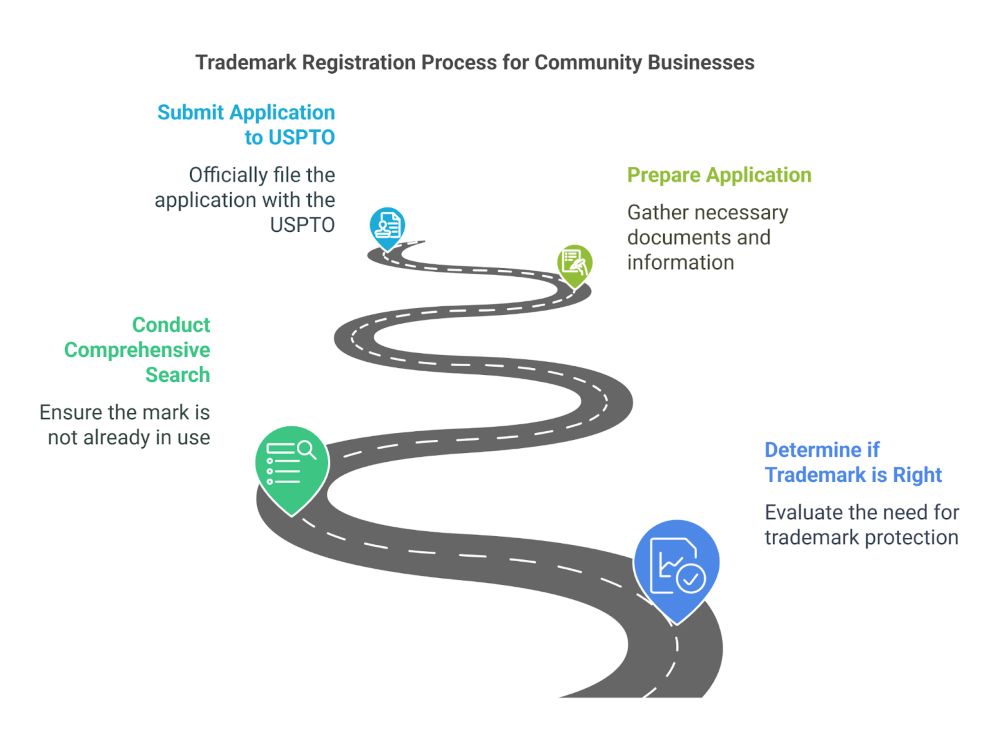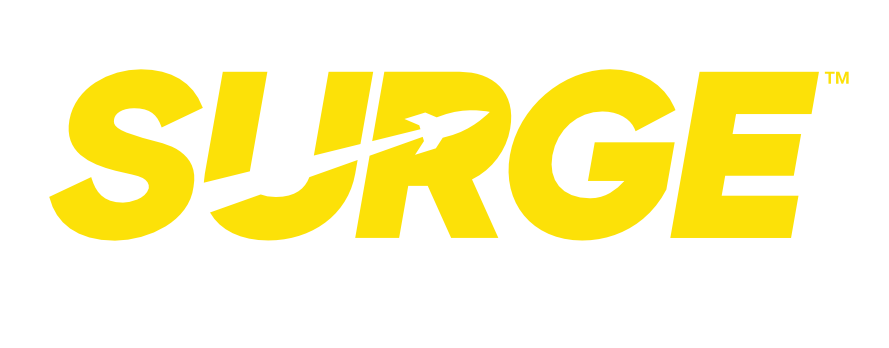Protecting Your Local Brand: Trademark Strategies for Community-Based Businesses
When you’ve built a local business, your brand represents more than just a name—it’s your community reputation and customer trust rolled into one.
Federal trademark registration offers the most effective protection for your municipal or local business brand, preventing others from copying or diluting what makes your business special.
Many small business owners mistakenly believe trademark protection is only for major corporations, when it’s actually an essential tool for businesses of all sizes.
Before investing heavily in local branding efforts, smart business owners conduct thorough trademark searches to ensure their desired business name or logo isn’t already in use.
This simple step can prevent costly rebranding later and establish strong legal protection from the start.
Key Takeaways
- Protecting your local brand through trademark registration prevents competitors from copying your identity and builds customer trust.
- Both federal and state trademark options exist for small businesses, with federal registration providing the strongest nationwide protection.
- Regular monitoring of similar trademark filings and consistent brand usage are essential for maintaining trademark rights after registration.
Why Trademarks Matter For Local Businesses
Trademarks serve as a crucial shield for local enterprises, providing legal protection while building consumer trust within communities.
These valuable assets help distinguish your business in an increasingly competitive marketplace.
The Role Of Local Branding In Community-Based Success
A strong local brand creates immediate recognition and fosters customer loyalty. When consumers see your protected brand, they associate it with the quality and service your business delivers. This connection forms the foundation of your reputation.
Well-executed branding initiatives can establish a compelling community identity that attracts both people and business opportunities.
Local entrepreneurs benefit from trademark protection by preventing competitors from capitalizing on their hard-earned reputation.
Small businesses with protected brands often experience enhanced customer confidence.
When customers trust your brand, they’re more likely to recommend it to friends and family, creating a powerful network effect within the community.
Local branding also helps businesses command premium pricing. Customers willingly pay more for brands they recognize and trust.
Trademarks As The Legal Backbone Of Brand Identity
Trademark protection represents a relatively low-cost investment that safeguards business interests while preserving consumer trust.
Without this protection, local businesses risk losing their unique identity to competitors or counterfeiters.
Even without formal registration, common law trademark rights provide some protection based on actual use of a mark.
However, registered trademarks offer stronger legal standing and broader territorial coverage.
Trademark protection gives business owners legal recourse against infringement. When others attempt to use similar marks, owners can take action to protect their brand identity.
Ongoing vigilance and proactive measures are essential for long-term brand protection. Registering a trademark is the first step in a comprehensive protection strategy.
For local entrepreneurs, trademarks transform their business name from a simple identifier into a valuable, legally protected asset that can grow in value over time.
What Local Businesses Can—And Should—Trademark
Securing trademark protection is crucial for local businesses looking to safeguard their brand identity and maintain a competitive edge in their community.
Elements That Are Eligible For Trademark Protection
Local businesses can trademark several brand elements that make them distinctive in the marketplace.
Business names are among the most common trademarks, and they should be registered if they are unique and not merely descriptive.
Logos that visually represent the business can gain valuable protection through trademark registration.
Slogans or taglines that capture the essence of a business are also eligible for trademark protection. These short phrases often become closely associated with a brand’s identity and values.
Product names, packaging designs, and even distinctive colors can be trademarked if they help customers identify the source of goods or services.
Many small businesses wonder, “Do I need a trademark?” The answer is yes if the business wants legal protection against competitors using similar identifiers.
Local Case Example
A small coffee shop in Portland called “Mountain Brew” successfully trademarked their name and logo featuring a distinctive mountain silhouette.
This protection became essential when a regional chain attempted to open a “Mountain Coffee Brewing Co.” with a similar logo in the same neighborhood.
The trademark registration allowed the original business to take legal action and protect their brand identity.
The regional chain had to rebrand completely, saving the local business from customer confusion and potential revenue loss.
Nonprofit organizations can also benefit from trademark protection. A local environmental nonprofit trademarked its unique name and logo, which helped when applying for grants and building community recognition.
These examples demonstrate how strategic trademark registration can be a powerful tool for establishing and protecting local business identities in competitive marketplaces.
Launching a new brand in Iowa or Austin? Surge Business Law simplifies trademark registration for local businesses with flat fees and legal clarity—get started on the right foot today. Contact us now.
Federal Vs. State Trademark Registration—What’s Right For You?
Choosing the right trademark registration path can significantly impact your community-based business’s brand protection strategy.
The decision between federal and state registration involves weighing factors like cost, geographic coverage, and enforcement capabilities.
Key Differences
Federal trademark registration provides nationwide protection through the United States Patent and Trademark Office (USPTO).
This registration gives you exclusive rights to use your mark across all 50 states, even in areas where you’re not currently operating.
However, federal registration is more complex and costs more than state options. The application process typically takes 8-12 months and requires a more thorough examination.
On the other hand, state trademark registration offers protection only within that specific state’s boundaries.
It’s generally quicker and less expensive than federal registration, sometimes completing in just a few weeks.
Key differences include:
- Geographic Coverage: Federal (nationwide) vs. State (single state)
- Legal Presumptions: Federal registration creates a legal presumption of ownership
- Symbol Usage: If you’ve received a registered trademark (®) vs. meaning you’re intending to use something as a trademark but haven’t registered it (™)
- Duration: Both require renewals, but have different timeframes
Which One Fits A Community-Based Brand?
State registration might be sufficient initially for community-based businesses focusing primarily on local markets. It provides adequate protection while the business establishes itself within the community.
However, even local brands should consider federal registration for significantly more protection. This becomes especially important if the business plans to expand to neighboring communities or states, or sell products online.
Many savvy business owners pursue both options. They file for state registration first for immediate protection while waiting for the federal application to process.
Budget considerations matter too. State registration fees are often lower than federal fees, making them more accessible for small community businesses with limited initial resources.
If the community brand has a unique appeal that might eventually attract interest beyond state lines, federal registration represents a worthwhile investment in long-term brand security.
The Trademark Process Simplified For Small Business Owners

Navigating the trademark process can seem daunting for community-based businesses, but breaking it down into manageable steps makes protection achievable.
Understanding how to register your mark properly ensures your local brand receives the legal protection it deserves.
Step-By-Step Breakdown
The trademark journey begins with determining if a trademark is right for your business.
First, conduct a comprehensive search to ensure your desired mark isn’t already in use. This crucial step helps limit the risk of costly legal disputes.
Next, prepare and submit your application to the U.S. Patent and Trademark Office (USPTO).
Be ready to provide:
- A clear representation of your mark
- List of goods/services associated with your mark
- Filing fee (varies based on application type)
- Basis for filing (use in commerce or intent to use)
After submission, the USPTO examines your application, which typically takes 3–4 months. If issues arise, you’ll receive an “Office Action” — a formal letter outlining any legal or procedural problems.
This is where most DIY applicants hit a wall. Office Actions are extremely common and can be difficult to navigate without legal experience, which is why many filings are ultimately abandoned.
We regularly help clients respond to Office Actions and resolve USPTO concerns effectively, increasing the odds of successful registration.
We also assist in gathering the proof required to show legitimate trademark use, which is a common reason applications are rejected.
Too often, the submitted evidence is incomplete or doesn’t meet USPTO standards. We help ensure your documentation is solid from the start.
How Surge Business Law Helps
Surge Business Law guides local businesses through the complex trademark process with personalized support.
Their trademark attorneys conduct thorough searches to identify potential conflicts before filing, significantly increasing approval chances.
The firm handles all communication with USPTO examiners and responds to Office Actions with legal expertise that small business owners typically lack.
This representation allows community entrepreneurs to focus on growing their businesses rather than navigating legal complexities.
Surge also offers ongoing trademark management services, monitoring for potential infringements, and handling renewal requirements to maintain protection.
Their attorneys explain each step in plain language, ensuring clients understand the value and protection their trademark registration provides.
The Risks Of Not Having Trademark Protection

Many local businesses overlook trademark protection until it’s too late. Without proper registration, your brand faces serious threats that can harm your reputation and bottom line.
Copycats And Confusion
When your brand lacks trademark protection, competitors can easily copy your name, logo, or slogan. This creates confusion among customers who might accidentally support another business, thinking it’s yours.
A local coffee shop called “Mountain Brew” without trademark protection might find another café using the same name just a few miles away. Customers might then leave negative reviews for your business based on their experience at the copycat location.
Without registration, your legal protection is limited, especially outside your immediate geographic area.
Your brand’s reach becomes restricted as you can’t easily expand to neighboring communities if someone else is already using your name there.
Financial Consequences
Neglecting trademark protection can have a severe financial impact on community-based businesses. Unprotected brands become liabilities that cost money rather than building value over time.
If another business registers your name first, you might face expensive rebranding costs.
These include new signage, packaging, website updates, and marketing materials, which often cost thousands of dollars for even small local operations.
Legal disputes without trademark registration typically favor the business that filed first. Enforcement becomes difficult when trying to stop infringement without proper documentation.
Many small businesses discover too late that their hard-earned local reputation can’t be legally protected without proper registration. Building customer trust takes years, but losing it through brand confusion can happen quickly.
Don’t let someone else claim your identity. Surge Business Law’s trademark services protect your name, logo, and legacy—lock it down before your competitors do. Let’s secure your brand now.
Common Trademark Mistakes And How To Avoid Them
Many community-based businesses make preventable trademark errors that can lead to legal issues and expensive rebranding efforts.
Local entrepreneurs often struggle with timing, proper symbol usage, and conducting thorough searches—mistakes that can threaten their brand’s long-term security.
Mistake #1: Waiting Too Long To File
Many local business owners put off trademark registration until they’ve achieved significant success. This delay creates a dangerous vulnerability window.
While you’re growing your community presence, competitors could register your mark first, forcing you to rebrand everything you’ve built.
Why timing matters:
- First to file typically wins legal disputes
- Common law rights offer limited protection
- Rebranding costs far more than early registration
The ideal time to file is before or soon after launching your business. Even if you’re operating on a tight budget, trademark protection should be prioritized as an essential investment rather than an optional expense.
Filing early establishes your legal claim to your business name, logo, or slogan. This protection is especially crucial for community-based businesses where local reputation and recognition directly impact success.
Mistake #2: Confusing ™ And ®
Using the wrong symbol might seem like a minor detail, but it can have legal consequences.
The ™ symbol indicates you’re claiming common law rights to a mark, while ® means your mark is federally registered with the USPTO.
Symbol usage guidelines:
- ™ = Unregistered trademark (can be used immediately)
- ® = Registered trademark (illegal to use before approval)
- SM = Service mark (for services rather than products)
Prematurely using the ® symbol constitutes fraud and can jeopardize your application or existing registration. Many small businesses incorrectly believe they can use either symbol interchangeably.
After filing but before approval, use only the ™ symbol. Once your registration is approved, then switch to the ® symbol to signal the stronger legal protection you’ve secured. This demonstrates your business’s professionalism and legal compliance.
Mistake #3: Not Checking For Similar Marks
One of the most common mistakes is failing to conduct a comprehensive trademark search before filing. Many local businesses skip this critical step, which can lead to rejected applications and potential infringement issues.
Effective search approach:
- Start with a basic USPTO database search
- Expand to state registrations in your operating areas
- Check business directories and social media platforms
- Consider similar-sounding names and alternate spellings
Don’t limit searches to exact matches. The USPTO can reject applications for marks that are merely similar to existing ones if they might confuse consumers.
This “likelihood of confusion” standard surprises many business owners.
Even if marks aren’t identical, similar sounds, appearances, or meanings can be problematic.
Consider hiring a trademark attorney for this crucial step. They can access specialized search tools and have the expertise to interpret results accurately.
Beyond Registration: How To Enforce And Maintain Your Trademark
Securing trademark registration is just the beginning of protecting your brand identity. Active enforcement and regular maintenance are essential to preserve your trademark’s strength and value in the marketplace.
Enforcing Your Trademark
Trademark owners must actively monitor their registered trademarks to prevent unauthorized use. Set up Google Alerts for your brand name and similar variations to catch potential infringements early.
Consider implementing a regular search schedule to check industry publications, social media, and business registries for possible violations.
That said, for our Momentum members, we eliminate the guesswork — our professional-grade monitoring software scans USPTO filings automatically, so you don’t have to rely on manual searches.
When a community-based business discovers infringement, they should first send a cease and desist letter outlining their rights.
If the letter doesn’t resolve the issue, the business may need to file a trademark infringement lawsuit. Small businesses can often negotiate a settlement before lengthy court proceedings begin.
Practical enforcement strategies:
- Document all instances of your trademark use in commerce
- Keep records of customer confusion from similar marks
- Consider trademark monitoring services for broader protection
- Actively enforce your trademark rights to prevent them from weakening
Maintenance Timeline
Trademark protection requires consistent maintenance to remain valid. Between the 5th and 6th year after registration, owners must file a Declaration of Use to verify the mark remains in commercial use.
Trademark owners must submit a renewal application and proof of continued use every 10 years.
Missing these deadlines can result in trademark cancellation, leaving the business vulnerable to competitors.
Key maintenance requirements:
- Years 5-6: File Declaration of Continued Use
- Year 9: Submit renewal application
- Every 10 years thereafter: Renew registration
Business owners should maintain quality control over how their trademark appears in marketing materials. Consistent usage helps strengthen common law trademark rights that exist alongside federal registration.
Set calendar reminders for approaching deadlines or work with a trademark attorney who tracks these important dates for the business.
How Surge Business Law Simplifies Trademark Protection
Surge Business Law specializes in making trademark protection accessible for local and community-based businesses. Their approach removes complexity from legal processes that often intimidate small business owners.
Transparent Pricing For Local Business Owners
Small business owners frequently avoid trademark protection due to unpredictable legal costs. Surge Business Law addresses this concern with a competitive Brand Security package that offers clear, flat-fee pricing specifically designed for Main Street businesses.
Unlike traditional law firms that bill by the hour, Surge provides upfront costs with no hidden fees.
This transparency allows local businesses in places like Austin, TX, and communities across Iowa to budget effectively for legal protection.
The firm’s pricing model includes:
- Complete application preparation
- Comprehensive trademark search
- Response to initial USPTO office actions
- Filing guidance throughout the process
Business owners receive professional trademark services without the anxiety of mounting legal bills, making protection more accessible to community-focused enterprises.
Ongoing Legal Support Through Membership
Trademark protection doesn’t end after registration. Surge Business Law offers membership programs providing continuous legal support to community businesses.
Their membership model helps local entrepreneurs:
- Monitor potential trademark infringements
- Address marketplace confusion issues
- Receive guidance on proper trademark usage
- Get updates on maintaining trademark rights
For Main Street businesses with limited resources, this ongoing relationship replaces the outdated model of only contacting attorneys during emergencies. Instead, members gain a proactive legal partner who understands their specific community context.
The firm’s approach recognizes that local businesses need legal compliance support that grows with them.
This consistent legal guidance helps community businesses leverage their trademarks as valuable assets for boosting local economic development.
Conclusion
Building a strong local brand takes time, dedication, and community connection.
When businesses invest in their local identity, they deserve to have that investment protected from those who might copy or misuse it.
Trademark protection offers the strongest legal shield for your local brand.
Through federal trademark registration, businesses can prevent others from using similar marks that might confuse customers or dilute their brand’s value.
Even small community-based businesses benefit from trademark protection. It’s not just for big corporations—it’s a powerful tool for local economic development and brand security.
Common law protection begins as soon as a business uses distinctive marks in commerce, but formal registration provides stronger legal standing.
Local doesn’t mean vulnerable. Community-based businesses should view trademark protection as an essential investment in their future, not a luxury.
When a business establishes a unique brand identity that resonates with the community, protecting that connection through proper legal channels ensures the relationship remains exclusive and mutually beneficial.
You’ve built your business—now protect it. Surge Business Law makes trademark protection easy, affordable, and local. Book your flat-rate consultation and safeguard your community brand today.
Frequently Asked Questions
Why is trademark protection important for local businesses?
Trademark protection prevents other businesses from using your brand name, logo, or slogan. It secures your identity, builds customer trust, and protects you from costly rebranding.
What can be trademarked by a small business?
You can trademark your business name, logo, tagline, product names, and even sounds or packaging designs—as long as they uniquely identify your business.
Do I need a federal trademark or a state trademark?
Federal trademarks offer nationwide protection, while state trademarks only protect your brand within that specific state. Local businesses planning to grow should consider federal registration.
What’s the difference between ™ and ® symbols?
™ means you’re claiming a trademark, even if it’s not registered. ® is used only after a trademark is officially registered with the U.S. Patent and Trademark Office (USPTO).
How long does it take to register a trademark?
Trademark registration with the USPTO can take 8 to 12 months, depending on objections or office actions during the process.
What happens if someone copies my brand name?
If your trademark is registered, you can send a cease-and-desist letter or take legal action. Without a trademark, you may have limited options to enforce your rights.
How much does it cost to trademark a local business name?
USPTO filing fees start around $250–$350 per class, and legal service costs vary. Surge Business Law offers affordable flat-fee packages to simplify the process for local businesses.


